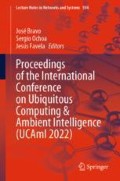Abstract
This paper presents an implementation of the E91 protocol for the distribution of quantum keys, providing an intuitive class structure that represents the different existing relationships between the collaborating entities in the simulated communication. This development is included in a toolset, called QuantumSolver, developed by the authors under the MIT opensource license. This library also includes several algorithms with different functionalities, such as the generation of random numbers, the resolution of the Deutsch-Jozsa and Bernstein-Vazirani problems, the Grover’s algorithm, quantum teleportation, the superdense coding protocol, and the quantum cryptography protocol BB84. The main details of the implementation are described here, as well as some conclusions obtained from the research carried out on its functionalities, illustrated in colorful heat maps.
Access this chapter
Tax calculation will be finalised at checkout
Purchases are for personal use only
References
Escánez-Expósito, D., Caballero-Gil, P., Martín-Fernández, F.: “QuantumSolver”. https://github.com/alu0101238944/quantum-solver/. Accessed 31 July 2022
Bennett, C.H., Brassard, G.: Quantum cryptography: public key distribution and coin tossing. Proc. IEEE Int. Conf. Comput. Syst. Signal Process. 175, 8 (1984). https://doi.org/10.48550/arXiv.2003.06557
Ekert, A.K.: Quantum cryptography based on Bell’s theorem. Phys. Rev. Lett. 67(6), 661–663 (1991). https://doi.org/10.1103/PhysRevLett.67.661
Kardashin, A.: E91 quantum key distribution protocol. https://github.com/qiskit-community/qiskit-community-tutorials/blob/master/awards/teach_me_qiskit_2018/e91_qkd. Accessed 31 July 2022
Bell, J.: On the Einstein Podolsky Rosen paradox. Phys. Physique Fizika 1(3), 195–200 (1964)
Bennett, C.: Quantum cryptography using any two nonorthogonal states. Phys. Rev. Lett. 68(21), 3121–3124 (1992)
Acknowledgements
This research has been possible thanks to the support of Binter Cybersecurity Chair at University of La Laguna.
Author information
Authors and Affiliations
Corresponding author
Editor information
Editors and Affiliations
Rights and permissions
Copyright information
© 2023 The Author(s), under exclusive license to Springer Nature Switzerland AG
About this paper
Cite this paper
Escánez-Expósito, D., Caballero-Gil, P., Martín-Fernández, F. (2023). Study and Implementation of an Interactive Simulation of Quantum Key Distribution Using the E91 Cryptographic Protocol. In: Bravo, J., Ochoa, S., Favela, J. (eds) Proceedings of the International Conference on Ubiquitous Computing & Ambient Intelligence (UCAmI 2022). UCAmI 2022. Lecture Notes in Networks and Systems, vol 594. Springer, Cham. https://doi.org/10.1007/978-3-031-21333-5_96
Download citation
DOI: https://doi.org/10.1007/978-3-031-21333-5_96
Published:
Publisher Name: Springer, Cham
Print ISBN: 978-3-031-21332-8
Online ISBN: 978-3-031-21333-5
eBook Packages: Intelligent Technologies and RoboticsIntelligent Technologies and Robotics (R0)

